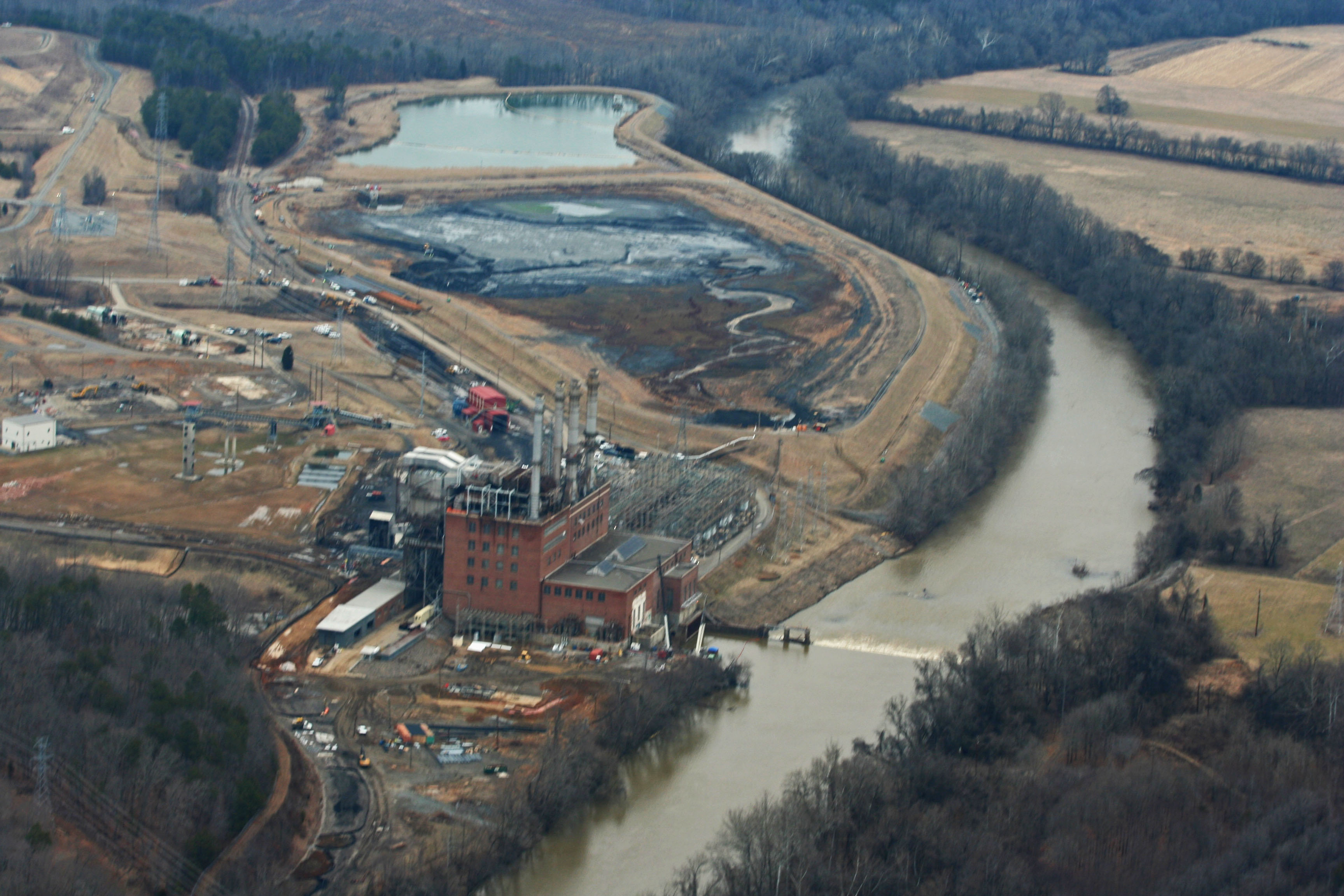SciWorks Radio is a production of 88.5 WFDD and SciWorks, the Science Center and Environmental Park of Forsyth County, located in Winston-Salem.
Recently, we looked at the cause of the Dan River coal ash spill, and discussed some ways to read the river for damage. Today we'll speak with Dr. Dennis Lemly, research fish biologist for the US Forest Service, about this recent spill and the impact of ash waste in general.
When it comes to local coal ash storage, there are basically two kinds. The safer one attempts to seal the waste from rainwater.
Landfilling isolates the ash much more from surface exposure. But what landfilling does is provide a threat to groundwater if there's not proper lining of those.
Some facilities are using this. But many, including in Eden where the recent spill occurred, use a type which leaves the ash ponds open and exposed.
The biggest hazard to fish and wildlife is the surface impoundment type because it produces wastewater and leaching of contaminants that get into surface water. That provides a direct link between the contaminants in the coal ash and fish and wildlife.
Dr. Lemly has spent much of his career studying coal ash and its effects on the environment.
In 1978 at Belews Lake, the fish began to disappear. What we found was the contaminants in the coal ash were actually leaching out of the ash and getting back in the reservoir. The trace element selenium was accumulating in the fish and in fish eggs and when the eggs hatched it resulted either in dead or deformed young. So, virtually every fish in that reservoir disappeared. Just last summer the ash technique that was being used 35 years ago was also being used at Lake Sutton, North Carolina, and was causing selenium poisoning in fish in that reservoir as well. So the same type of effect from the same pollution source from the same disposal practice 35 years apart. So in terms of storage techniques they haven't changed.
Belews Creek now uses landfill, but like Lake Sutton and Eden, many are still using surface impoundment. So, what impact to wildlife should we expect from the Dan River spill?
What impact that did have initially in terms of smothering and blanketing benthic organisms on the bottom of the river, those, by and large, probably would not be visible in terms of dead carcasses per se. To some extent some of the clams and mussels that have been seen, turtles things like that, maybe evidence of the effect of the blanketing and the ash impact initially. And also the amount of animals that left the area just because of the highly polluted water and the high concentration of ash. My larger concern now is the long-term effect of the ash and the contaminants that are in that ash; moving into the food chain, accumulating in fish tissues, causing reproductive effects and deformities in the fish. We may see some evidence of that as early as this spring and summer.
There are also economic impacts.
There's a chain of events that leads to an increased cost over time that adds up component by component. The cost per fish ranges anywhere from $10 to $30. The aesthetic impact of people knowing the river is contaminated and not wanting to recreate on the river. A lot of the local folks aren't going down there to use it anymore. Canoers and kayakers aren't going to the river, so there's an impact there that will take place over time. For every acre of aquatic wetland habitat, dollar values are placed of anywhere from $10,000 to $50,000 an acre.We can assess that as a damage cost because of the destruction of the riverbed from dredging. So even though they're attempting to clean some ash out of the river they're also causing a tremendous impact. The damage to the river will be at least a million dollars a mile. If you look at about 70 miles of river as a starting point, about $70 million of impact. It could go up tenfold from there very easily.
Another potential hazard of coal ash remains unstudied, according to Dr. Lemley. If proven, it would be true for waste . . . and recycled ash used in materials like cinder blocks and wall-board.
There are also concerns about radiation in coal ash. There need to be measurements done to see what the emission is, to see in fact if there is an emission. So if there are measurable discharges of gamma radiation, that needs to be documented and exposed.
This Time Round, the theme music for SciWorks Radio, appears as a generous contribution by the band Storyman and courtesy of UFOmusic.com.
300x250 Ad
300x250 Ad
